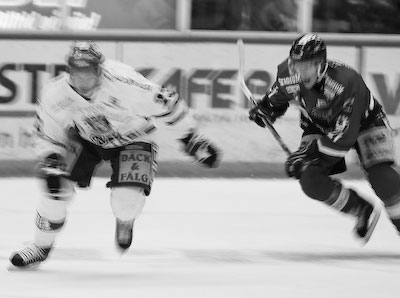Aperture (Shutter Speed)
If you browse a bit among the different lenses that are registered on Lensora and look at the specifications of these lenses, you can start to think about whether it really matters if the lens has a maximum aperture of f/2,8 or f/5,6?
The aperture matters
Yes, the aperture value does matter on the shutter speed. It can be the difference between a real crisp award-winning shot and a blurred photo that ends up in your computer's Recycle Bin.
For the subject you want to capture to eventually become an image, light must enter the camera. If you want to capture a snapshot, it is good if the current amount of light can enter the camera as fast as possible and in this case, a larger aperture is better than a smaller one. Even if a lens has eg f/2,8 as the largest possible aperture, you can change the aperture value. At a sporting event, we tested that at most different apertures let the camera choose the shutter speed itself. The motive remained the same.
You can say that we asked the camera:
- If we give you aperture X, how was do you need time to take the picture?
The results were as follows:
Aperture: f/2,8
Suggested shutter speed: 1/640 second
Aperture: f/4
Suggested shutter speed: 1/320 second
Aperture: f/5,6
Suggested shutter speed: 1/160 second
Shutter speed in sports
A shutter speed of 1/160 can not freeze a movement in a hockey or football match. Therefore, it can be stated that a lens that has the largest possible aperture of f/5.6 with prevailing lighting conditions and settings could not give you snapshots of the tackle, duel or penalty situation.
To be able to achieve a shutter speed of 1/640 with an aperture f/5.6, the ISO speed would have had to be changed, to make the camera less light-demanding. In this case, it would be a matter of going from ISO 200 to ISO 800. With higher ISO numbers also comes an increased amount of noise in the images and often the camera speed is reduced at too high ISO numbers.
Let's instead take a comparison in hockey or any other indoor sports. The pictures were taken at a smaller indoor hockey rink with mediocre light conditions. Therefore, ISO 3200 was required and the camera we used, in this case, could not go higher in ISO speed.
So in this case we have no further opportunity to compensate with the ISO speed to lower the shutter speed, as we could do on football previously. Here we have to rely on the brightness and the maximum aperture value of the lens.
The comparison below shows how important the lens aperture is to actually capture the snapshots.
Image examples

f/5,6 gave us 1/160 seconds

f/2,8 gave us 1/640 seconds
What does the images tell you?
As you see there is a great connection between the aperture and shutter speed. The larger the aperture of your lens, the shorter the shutter speed you can use, which is especially good for sports.
Do you know that you will be shooting a lot of indoor sports, such as volleyball, basketball, ice hockey, table tennis, athletics, and handball a bright lens is something you will appreciate as your workhorse over time. The lenses with a longer focal length, which are used to get close to the game and the players you are photographing, and which have apertures of f/2,8 or larger, are usually very expensive.
If you photograph sports but usually do this outdoors, a lens with f/4 will work just fine, because outdoors it is usually very favorable conditions in terms of light, compared to a sports hall.
Shutter speed at weddings?
Even at weddings, if you want to photograph the happy couple inside the church without using flash, you should look more closely at bright lenses.
If you never will photograph weddings or sports, you should still always strive to buy as bright lenses as possible, even though the price tag can sometimes be a little higher. These brights lenses give you the least amount of limitations but also a higher resale value and often the lenses with higher brightness are a bit more lavish.
The thing to remember is that today cameras are getting better at handling really high ISO numbers, which means that you can compensate for a slightly less bright lens (read f/4 +) on the camera. That could not be done to the same extent in the past when the images became very noisy at higher ISO.